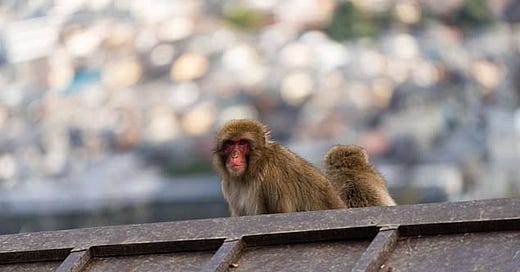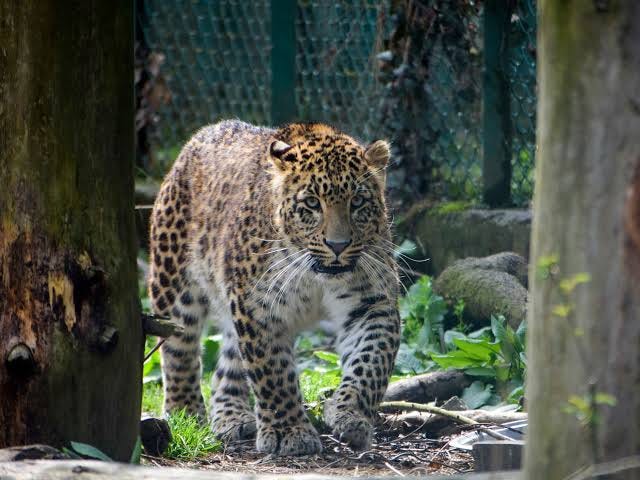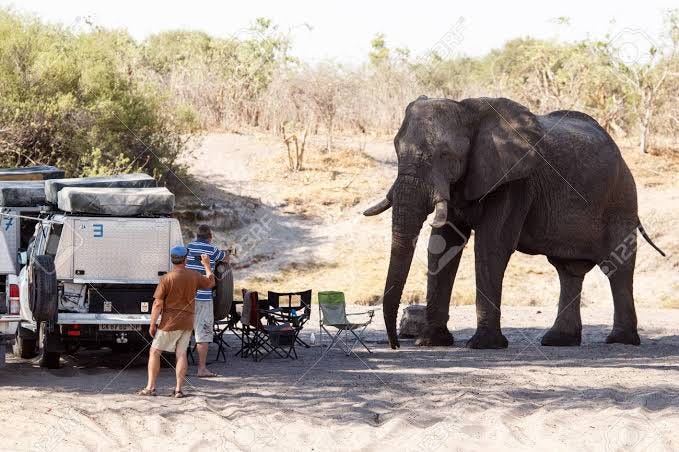Stay away from habitats of wild life, since animals now turn on human population due to climate change
Monkeys, bears and elephants grow aggressive - even piranhas attack man. Humans must stay away to survive and avoid injuries or death
Credit, Daily Mail
Last month, the Japanese city of Yamaguchi reeled in shock, as monkeys invaded it. At the end of the exercise, 42 people suffered attacks from the incidents, and had to be taken to the hospital for treatments.
Amidst a climate change-induced drought, starving monkeys attacked children in eastern Ethiopia who encroached into their habitat. The wild monkeys then swooped on communities such as Dawa and Shebelle. Along with the unprecedented drought, attacks by wild monkeys compounded the situation in the country.
In China, elephants boldly marched out of the Xishuangbanna National Nature Reserve on the country’s far south western border with Laos. Though they refrained from carrying out violent activities on people, they ransacked stores of grains left over from fermentation, leading to stories of destruction caused by drunken elephants.
Attacks rise in India, Credit, Aljazeera
Increasingly, wild animals cause destruction to humans who encroach into their habitat, drawing attention not only to the boldness of rampaging elephants and starving monkeys, but also to the astonishing rate at which climate change fuels the aggressive behavior of a rising number of animals.
Before 2000, bears in Canada rarely attacked humans, with polar bears staging just 47 attacks on humans between 1960 and 2009, an average of 22 per decade. When sea ice got to record low levels and humans encroached into their territory, polar bears’ attack on humans increased to 15 between 2010 and 2014, with 80 percent of the attacks taking place between July and December, the greatest number of attacks taking place within a four-year period.
Rain fell in Kenya in October 2019, causing Lake Naivasha to spill its water into a land where hundreds of hippo settled, close to the fishing grounds of ordinary people. A dangerous melee took place, with the hippos mauling the fishermen. In Argentina, human incursion into the Parana river and a climate-change induced shortage of the piranha's normal prey led to attacks on humans.
In 2016, shark attacks rose during a record-breaking hot summer in the United States, with at least one expert predicting an increase in shark attacks around the world that year. In southern Japan, bears turned their aggression on humans, while in the six months to November 2020, they mauled no fewer than 63 people, two dying from the acts of violence against humans.
Elephant in Botswana, Credit, Botswana Safari
Thirty thousand elephants reside in India, but with the country’s population at 1.4 billion people, the elephants see human incursion into wild spaces as a threat, at a time of limited food due to climate change. The increased contact with humans results in the elephants attacking people, with the animals killing around 500 humans every year.
Wildlife violence poses problems in Botswana. As a result of shrinking forests due to climate change, animals encroach on agricultural lands. Fifty farmers suffered fatal attacks, with 80 people injured, according to a study by the Botswana Institute of Development and Policy Analysis.
Everywhere, due to climate change, cases of animals attacking humans show a rise, compared to periods when the devastating effects of climate change had yet to fully express themselves, resulting in grievous consequences.
One hundred and twenty-four people lost their lives in conflicts with elephants in Kerala, India between 2014 and December 2020, while three thousand and ten persons perished at the national level. Tigers in Nepal tripled their population in 12 years, but 104 attacks on humans took place in the last three years, disrupting grazing activities, farming, and household work.
The province of Yunnan in China loses about $4.5 million dollars through damages from elephant attacks every year. Natural reserve operators often become victims through compensation payments over tigers’ attacks during human disturbances, a situation cutting into the operators’ bottom line.
In the United States, health care costs reach more than one billion dollars a year through the injuries arising from animal attacks on humans, according to Dr. Joseph Forrester, one of the authors of a study published in the BMJ. Elephant attacks on people in Botswana cause dependency on government-aided destitute programmes, with farmers abandoning their farms over the rising occurrence of violence.
A piranha in its habitat, Credit, Independent.ie
In other words, the increasing violence of animals such as elephants, monkeys, tigers, piranhas and others extend beyond physical injuries or deaths. They touch on health care costs in the United States, to compensation payments in China, and disruption to grazing lands in India.
Many of the people reading this article would doubtless agree that wildlife attacks on humans rise due to climate change, but what can we do practically about the situation?
Lots of experts through the years advise physicial measures to stop atacks by animals, such as not getting close to them, not becoming too friendly to strange animals, not provoking them. Rather, we should acknowledge an important truth and act on it.
Humans should stay from animals when in their habitat, instead of encroaching into their space. Not encroaching means living an injury-free and happy life. It's time people respect animals in their habitats. It solves lots of problems.
What to Do
Credit, Joom
Preventing Wildlife Attacks: Let common sense overrule curiosity. Read this.
Five ways to ward off a wild animal Attack. Read this.
Surviving animal attacks. Read this.
Why do animals attack humans (and ways to Prevent it.) Read here.
What to eat
Indian vegan dish, Credit, Rainbow Plant Life









